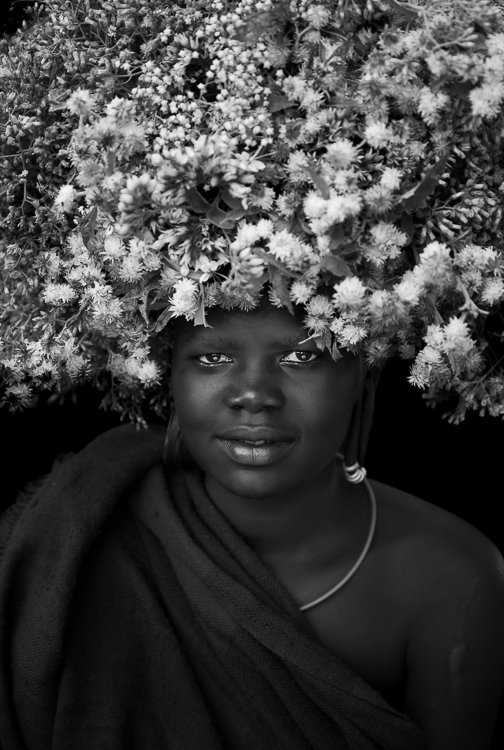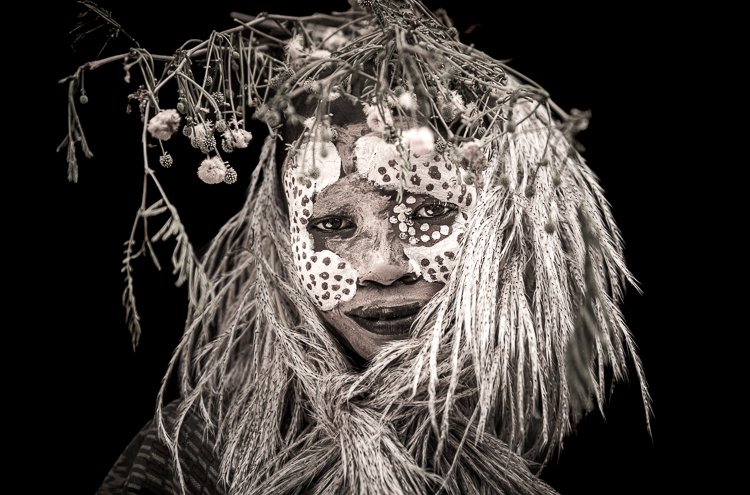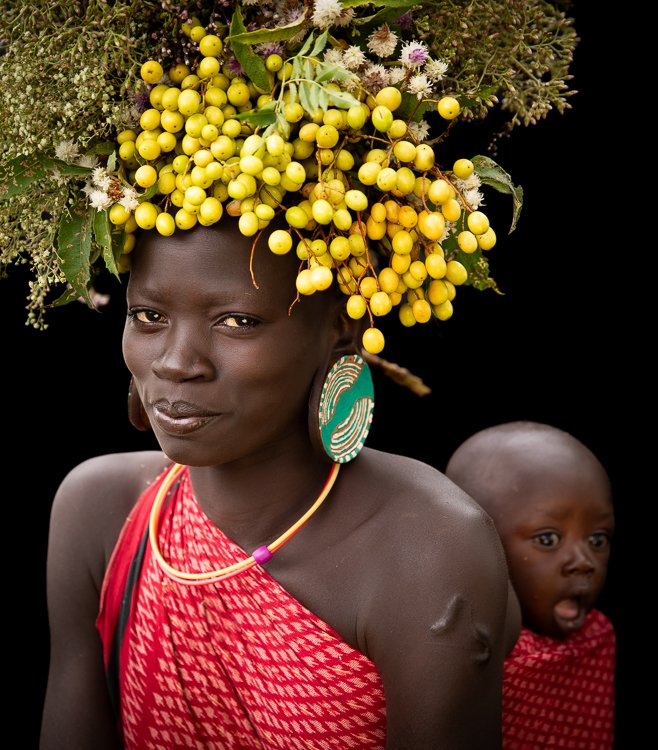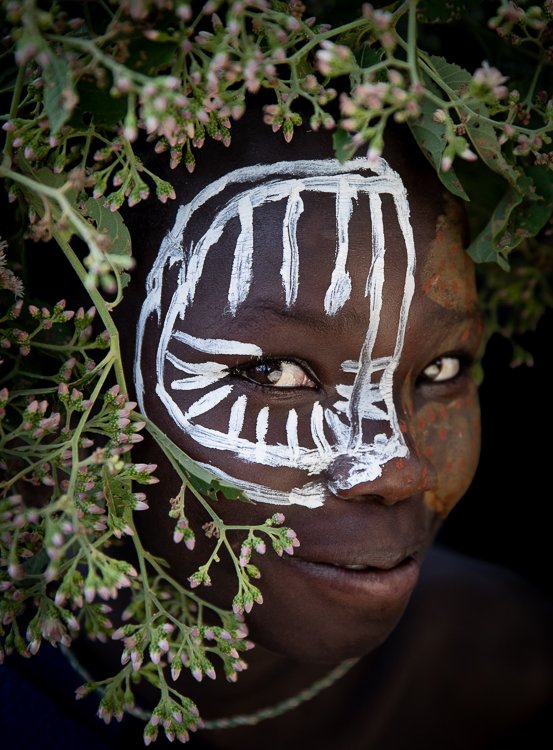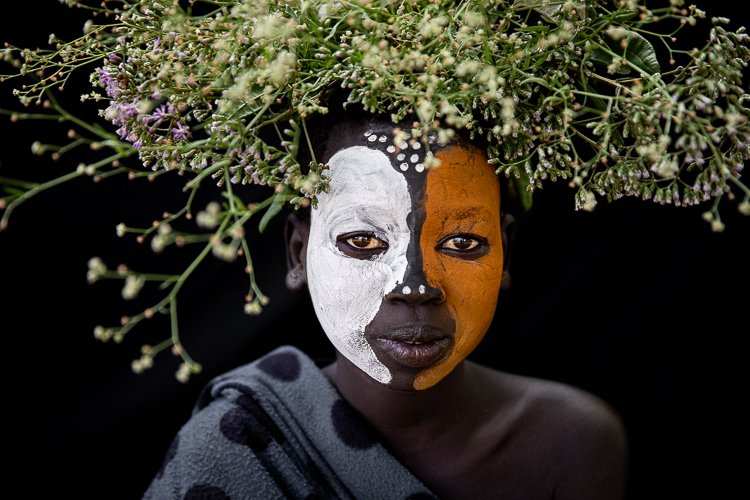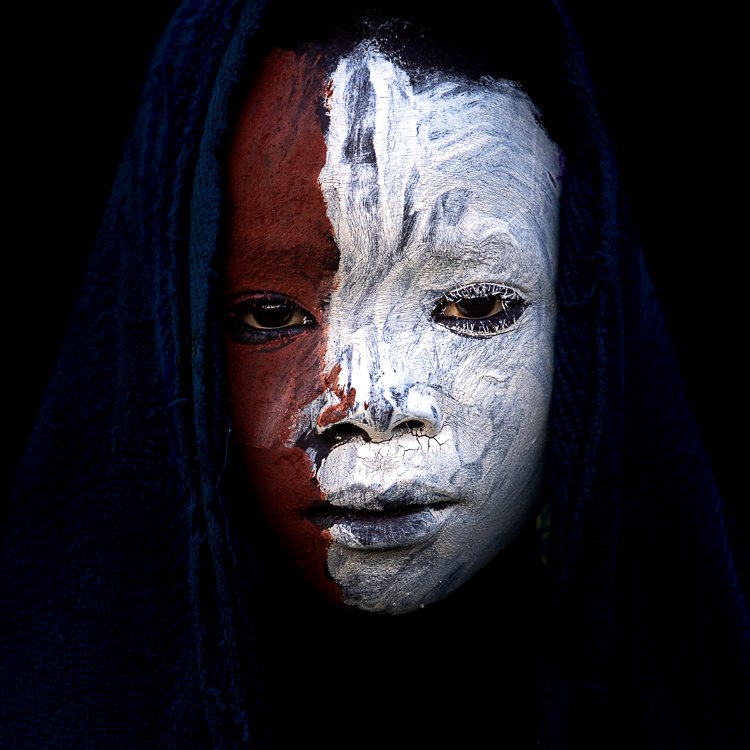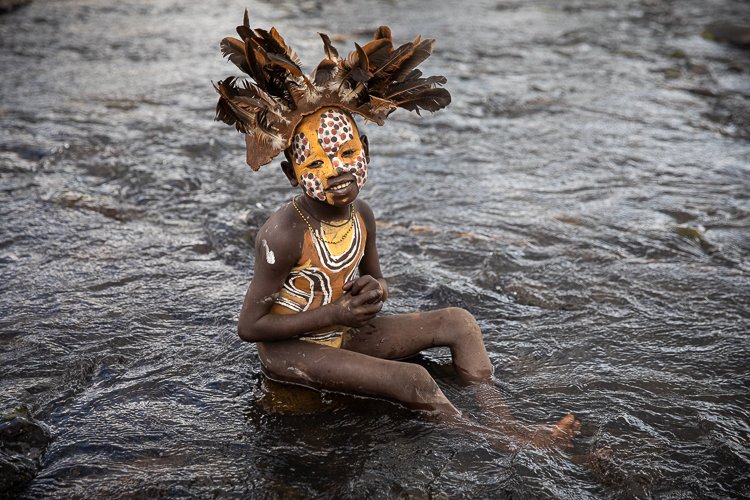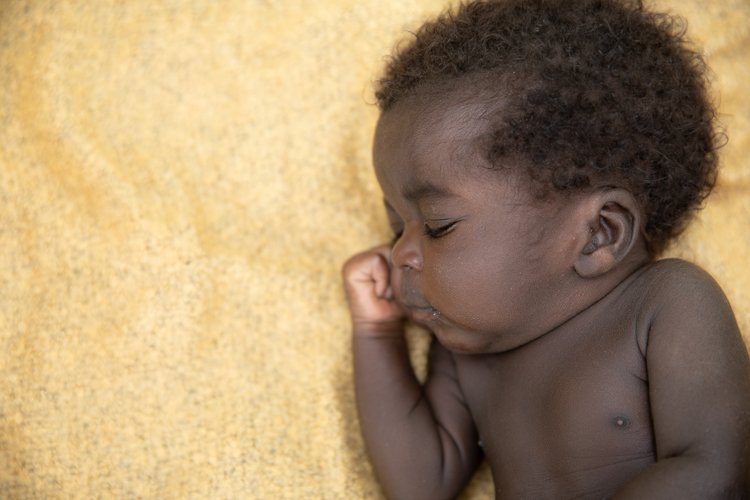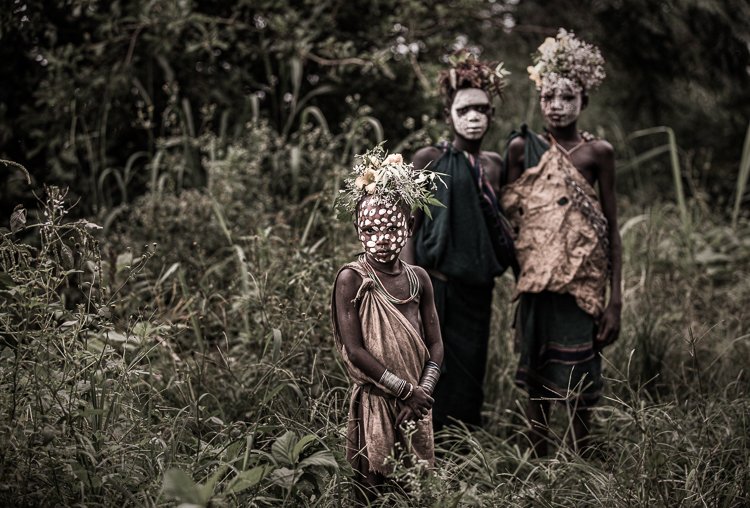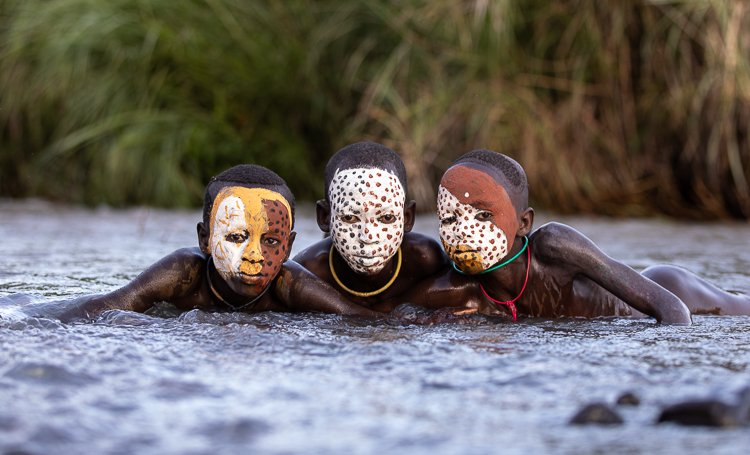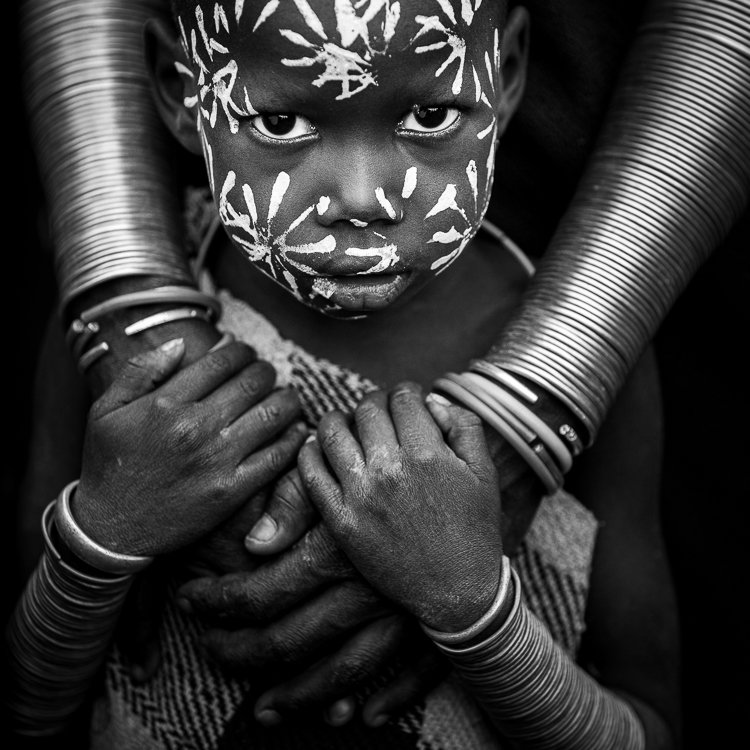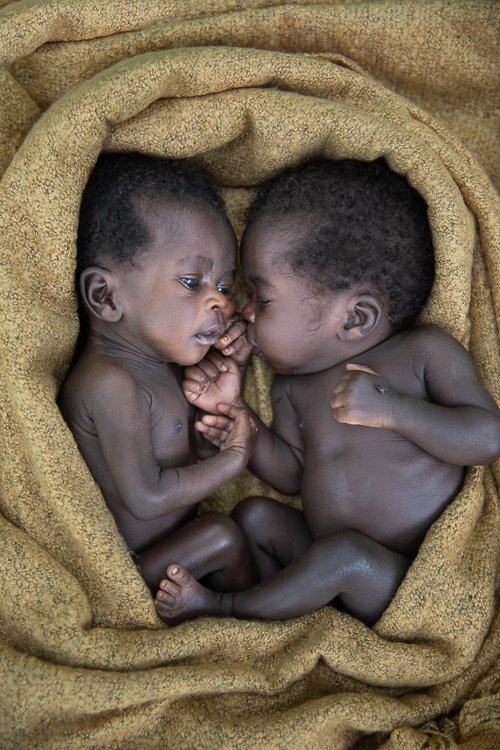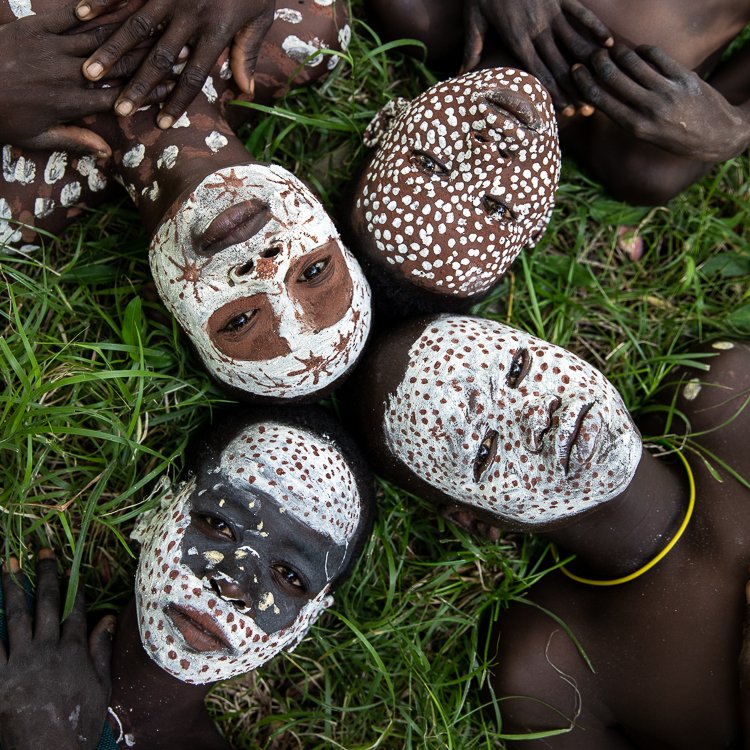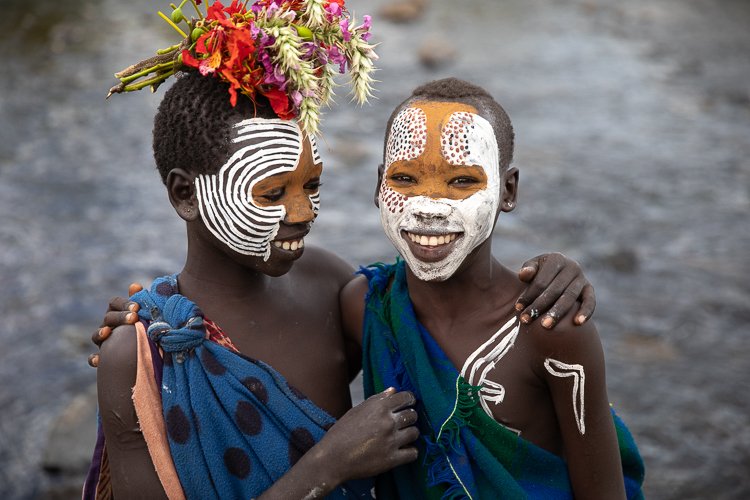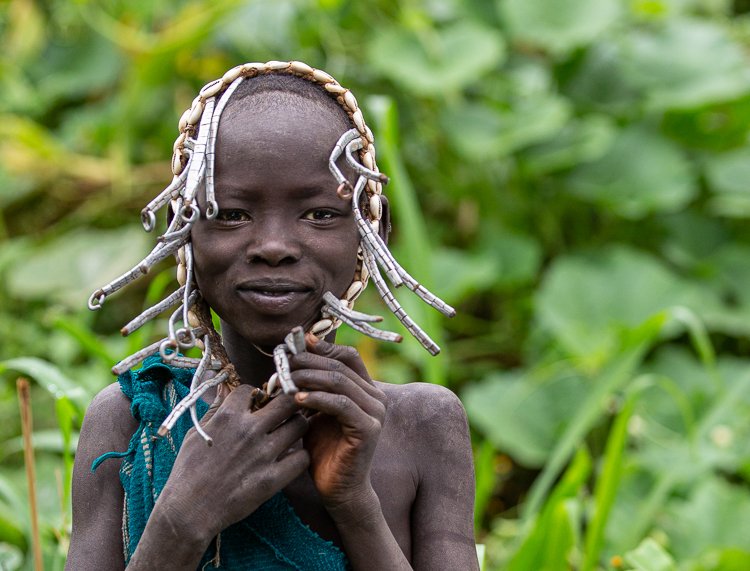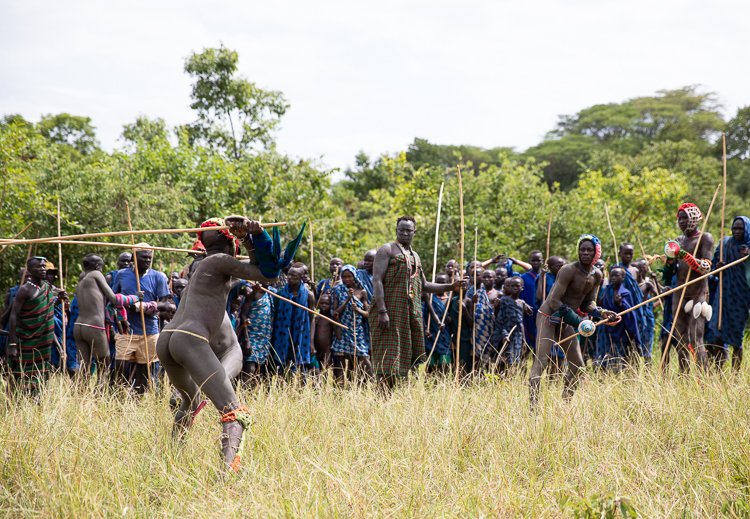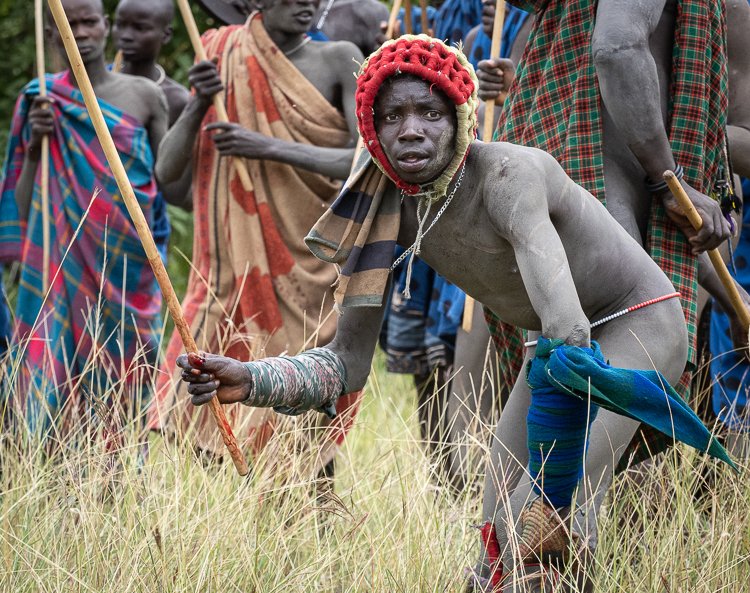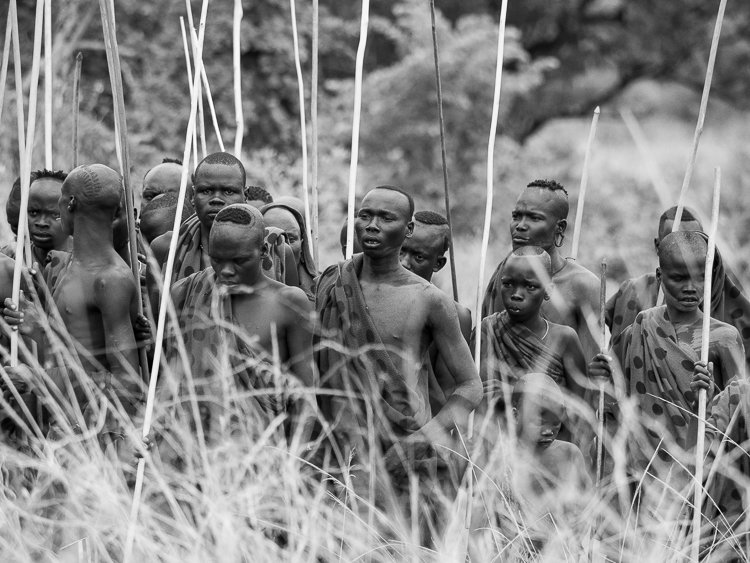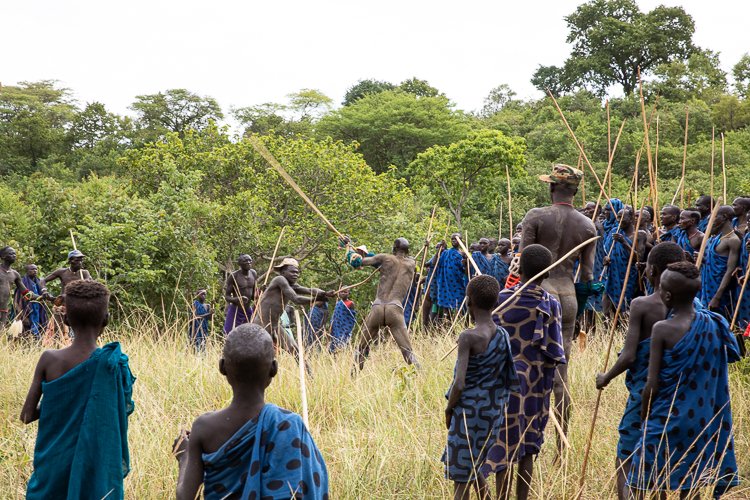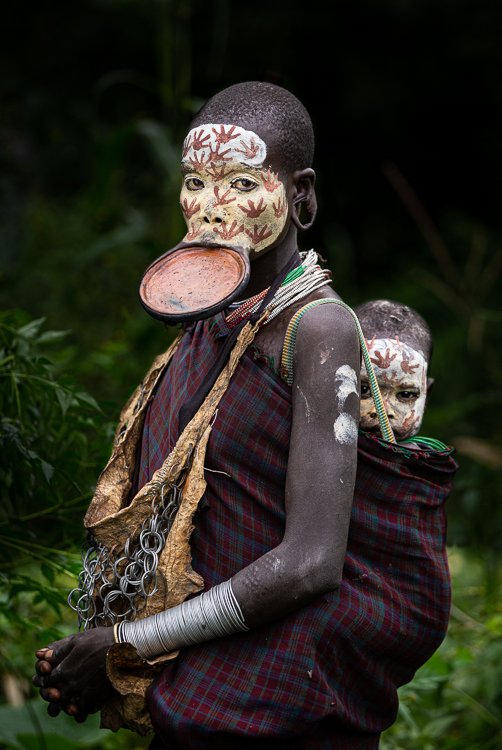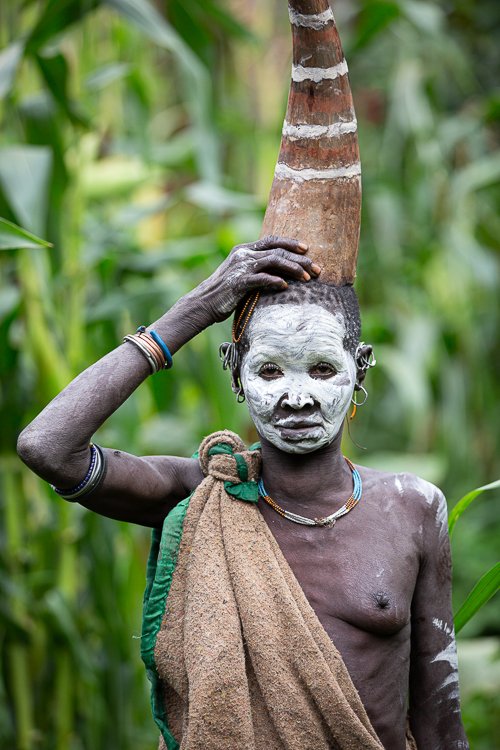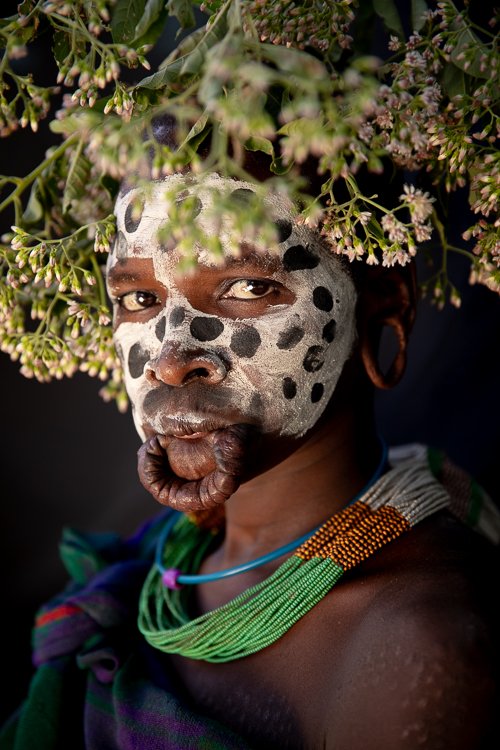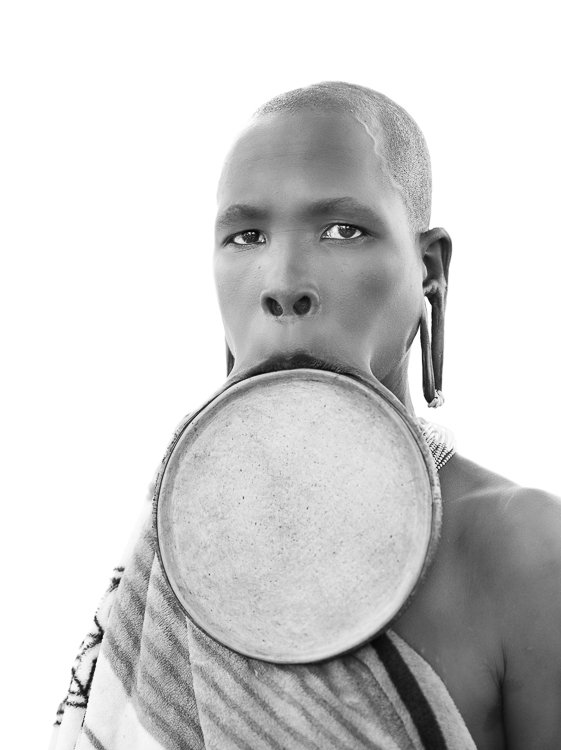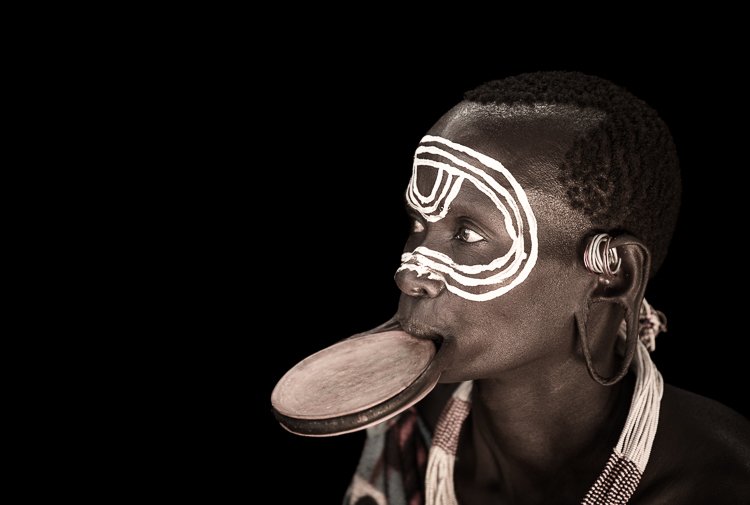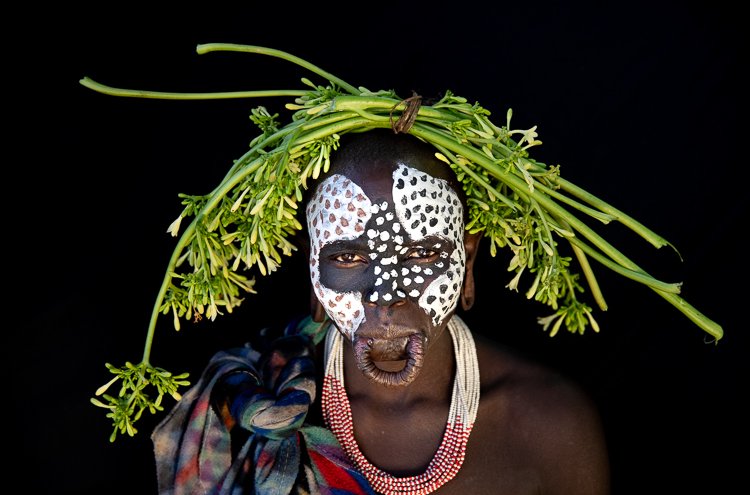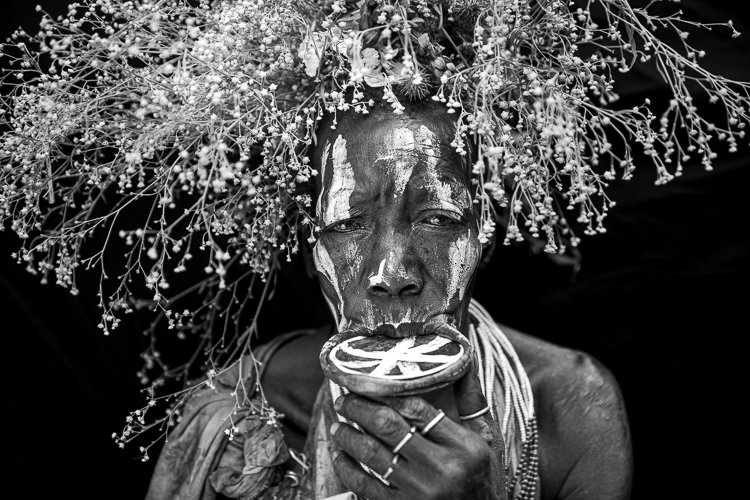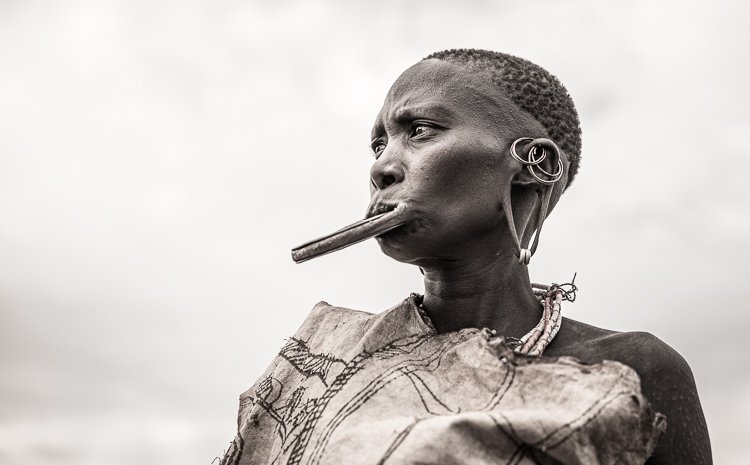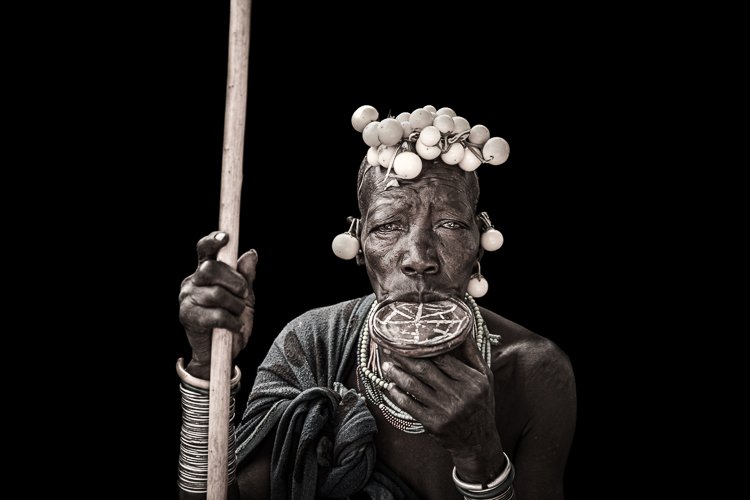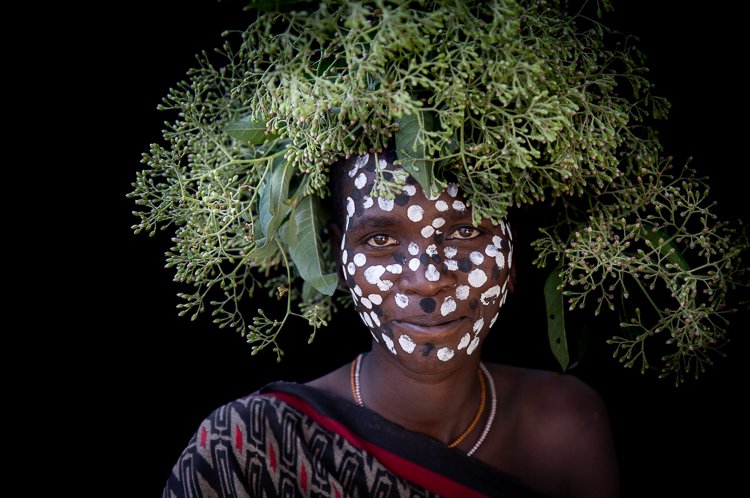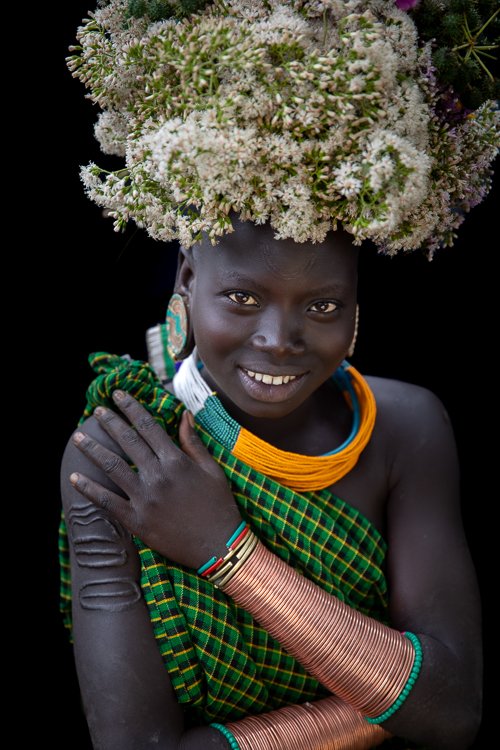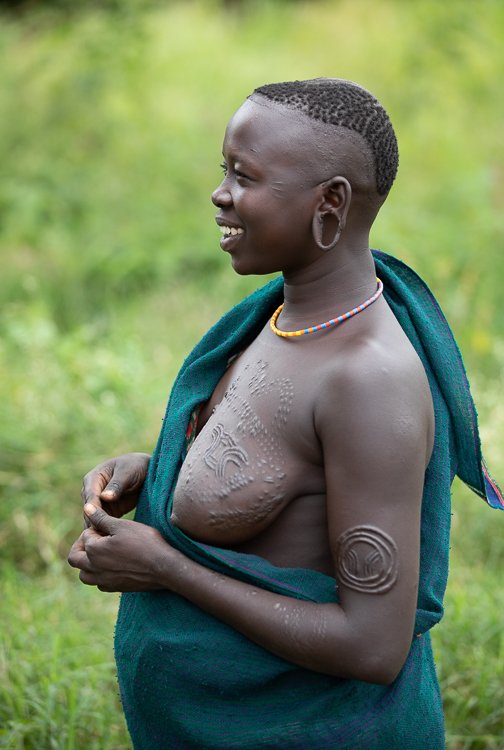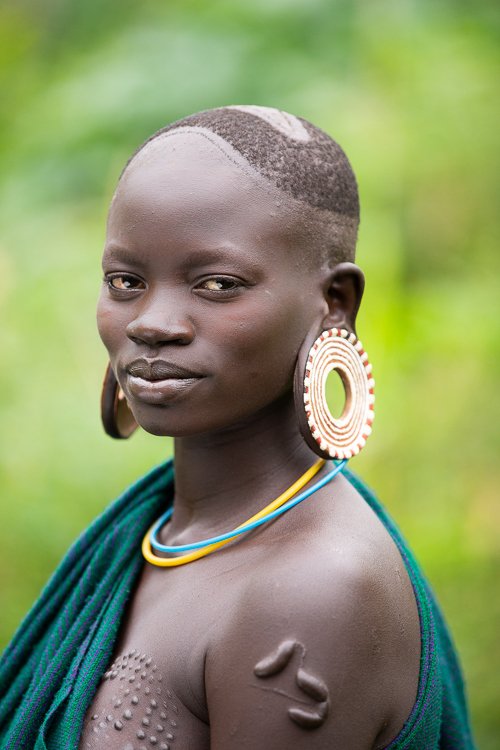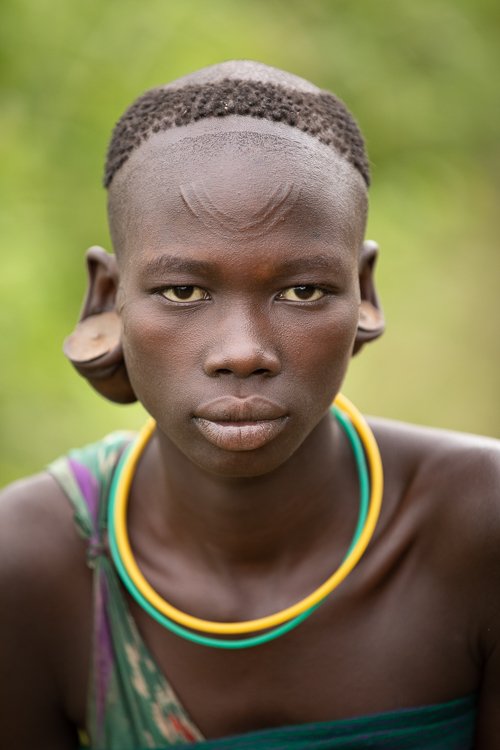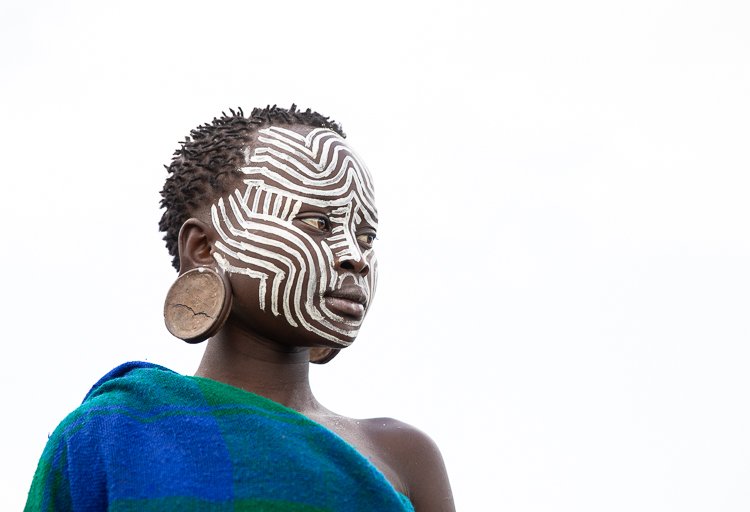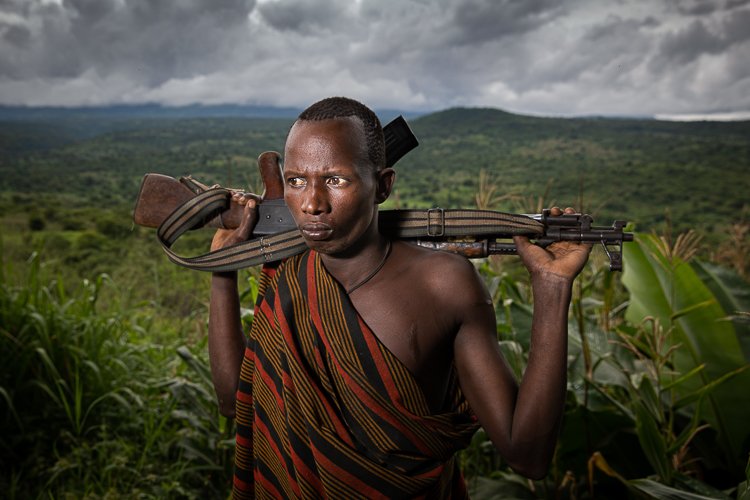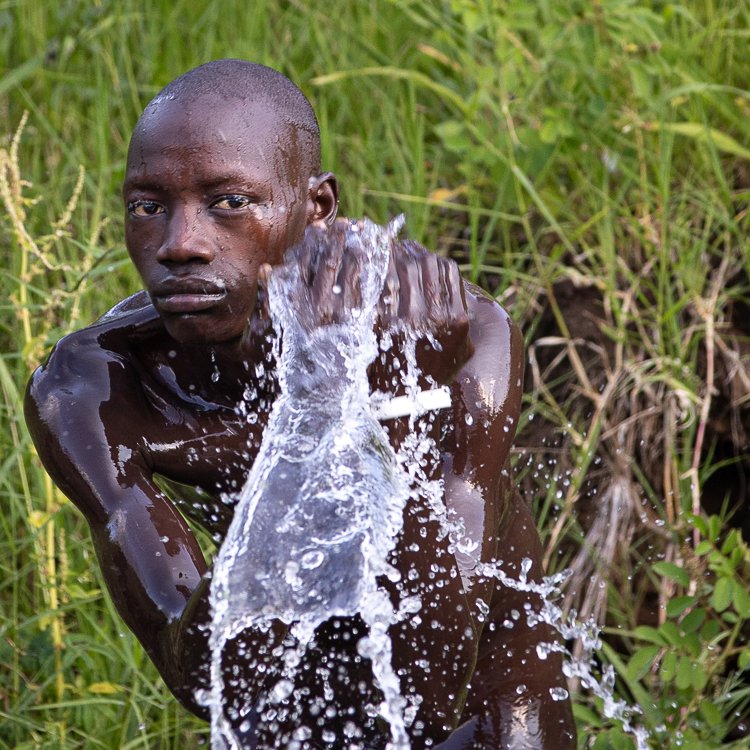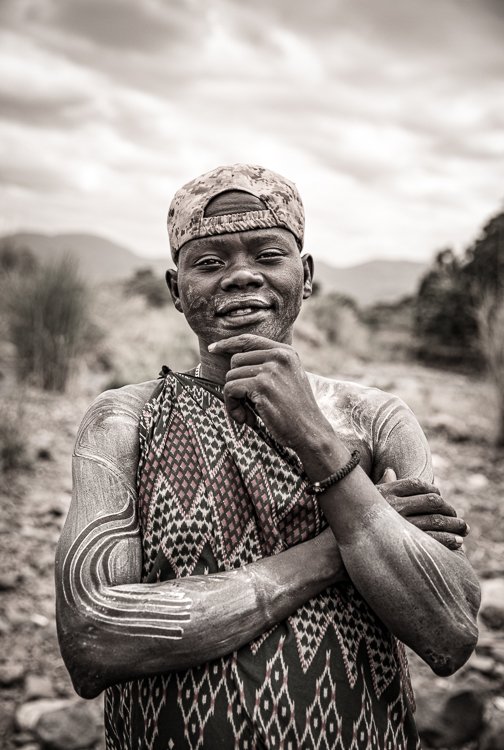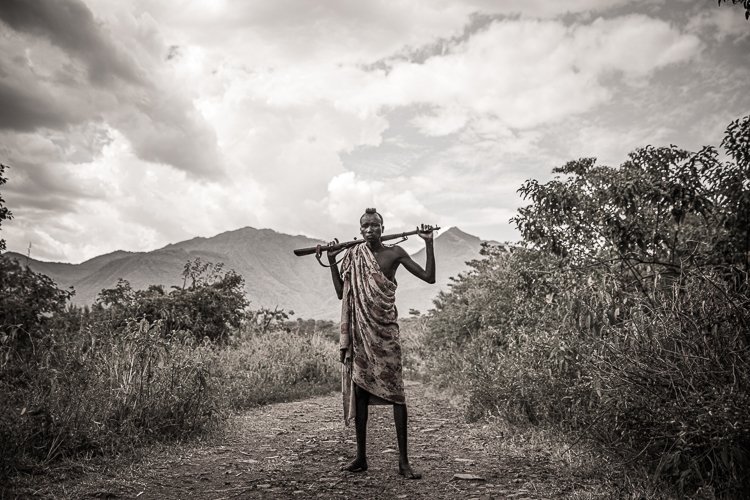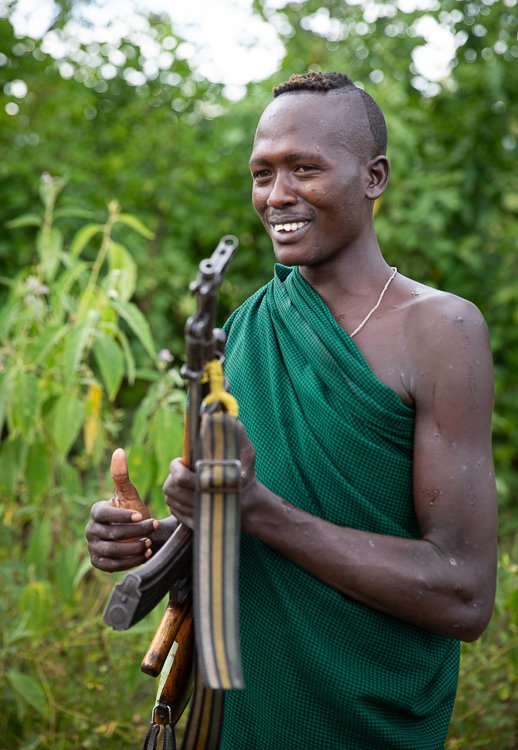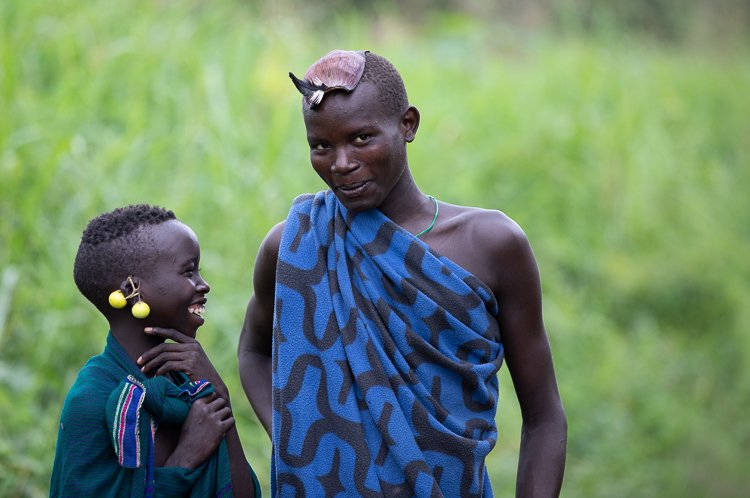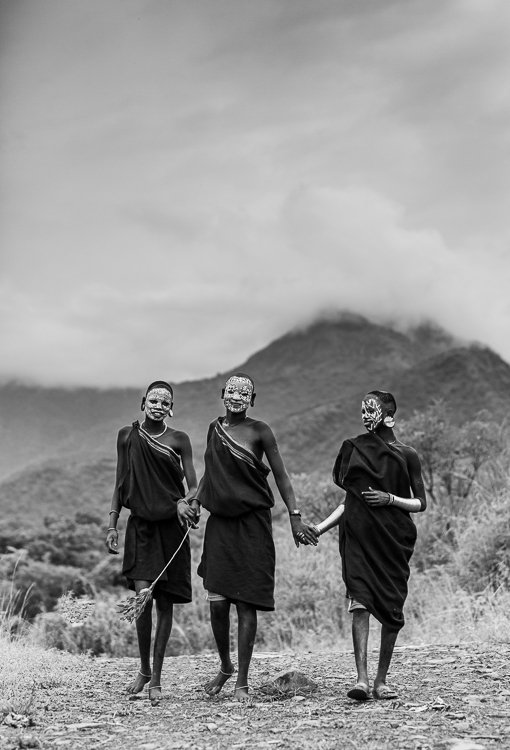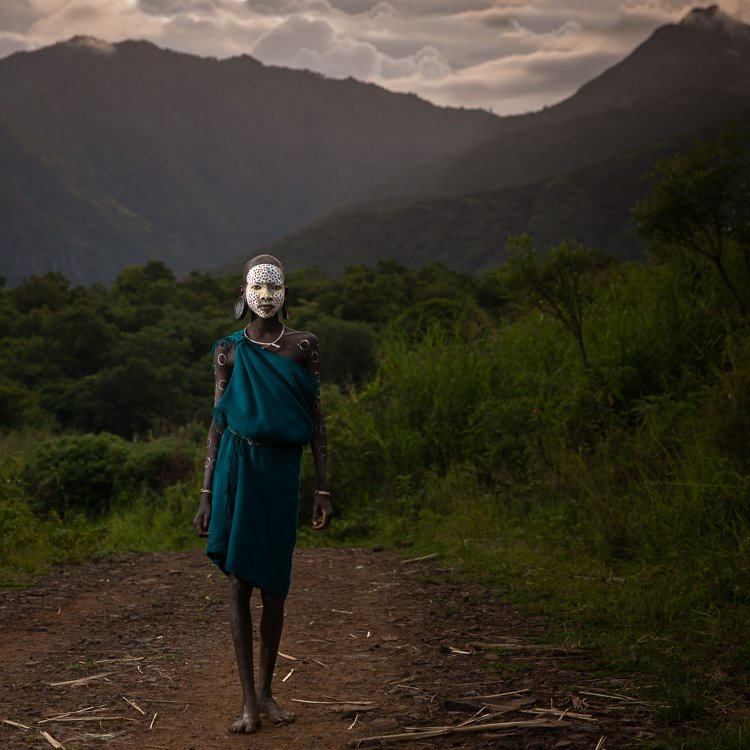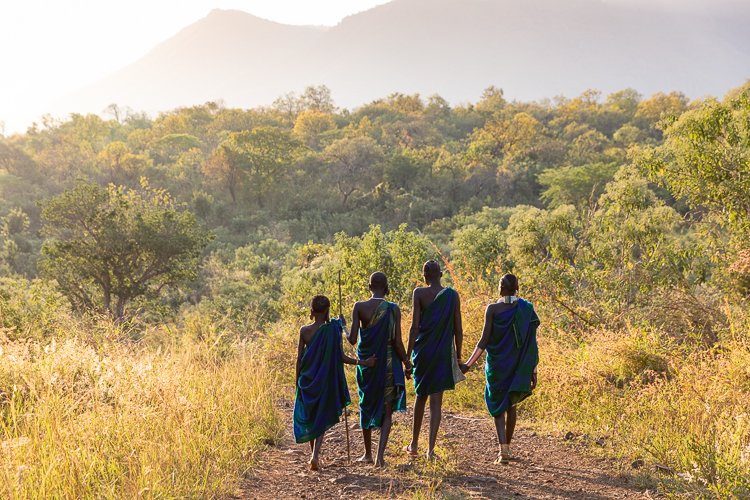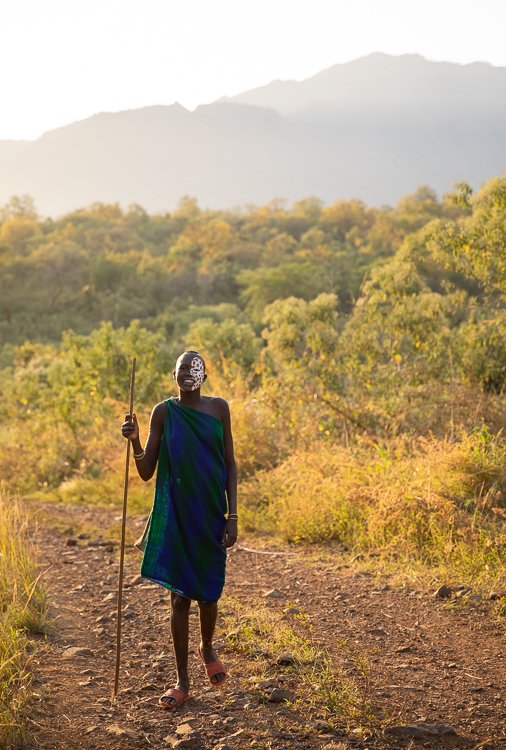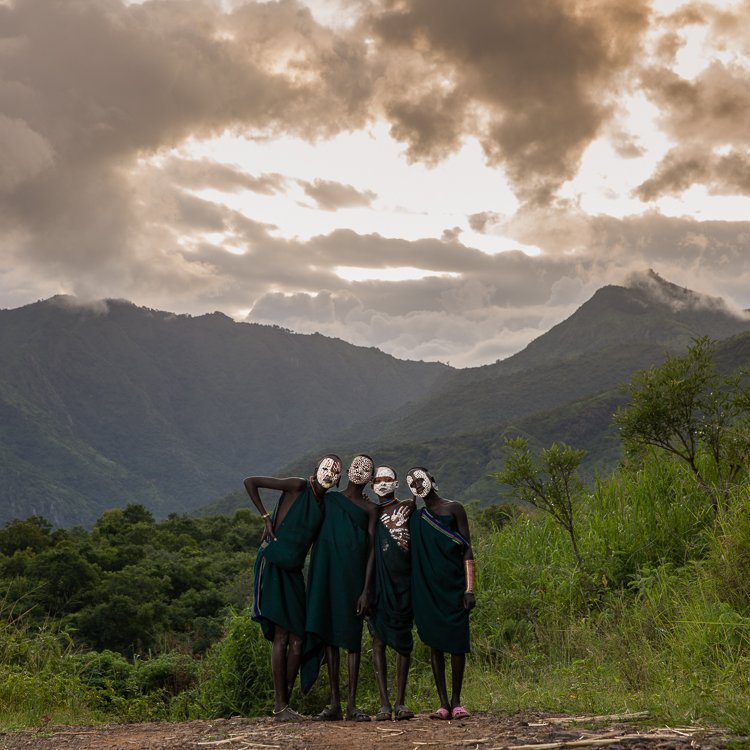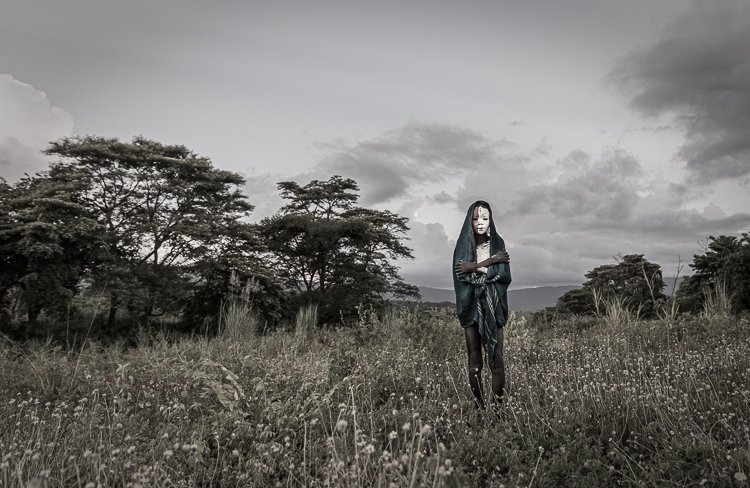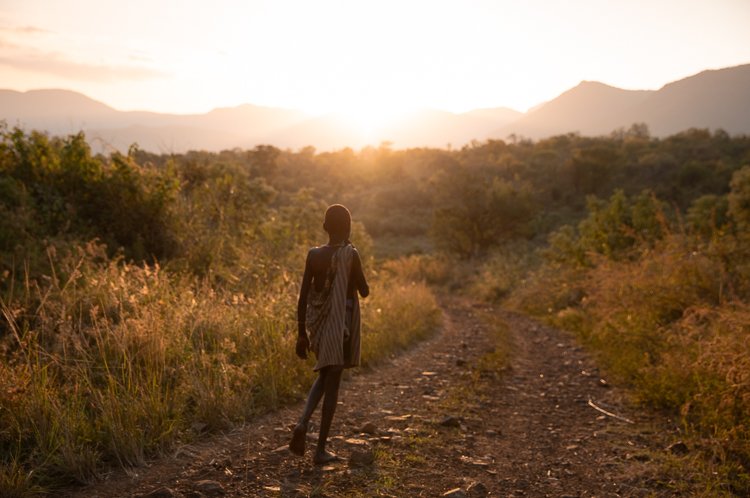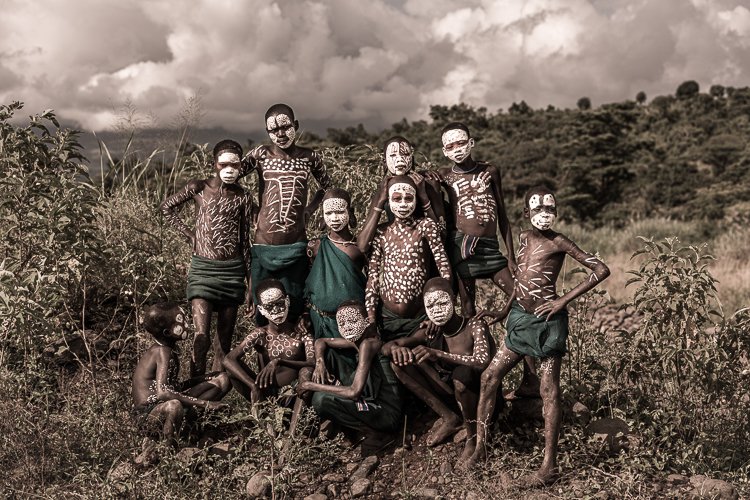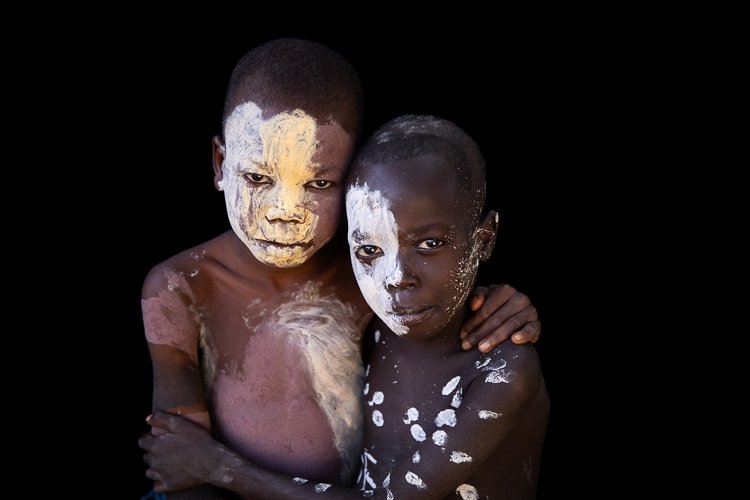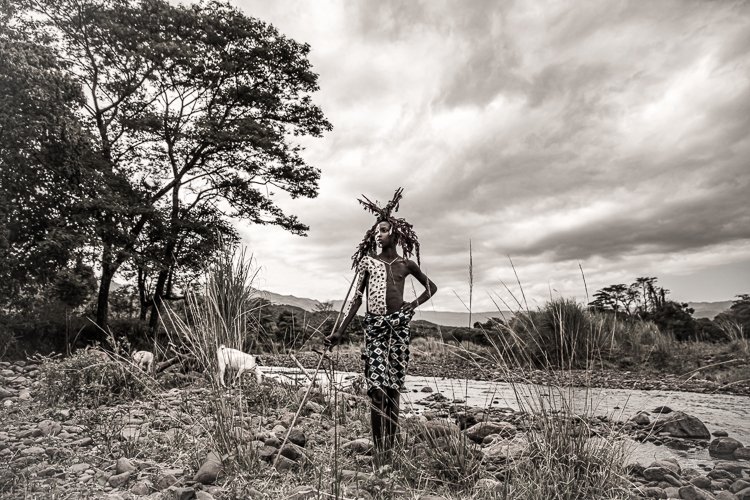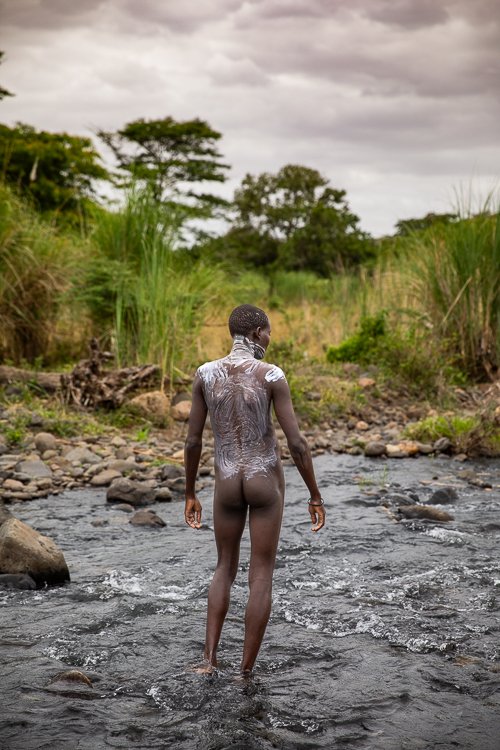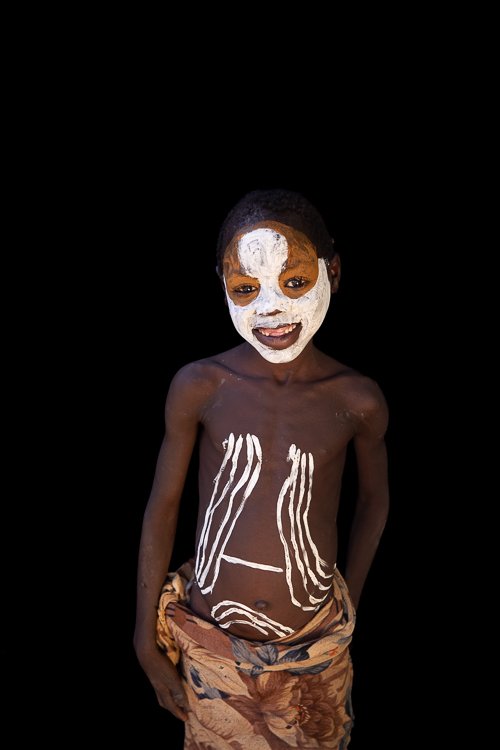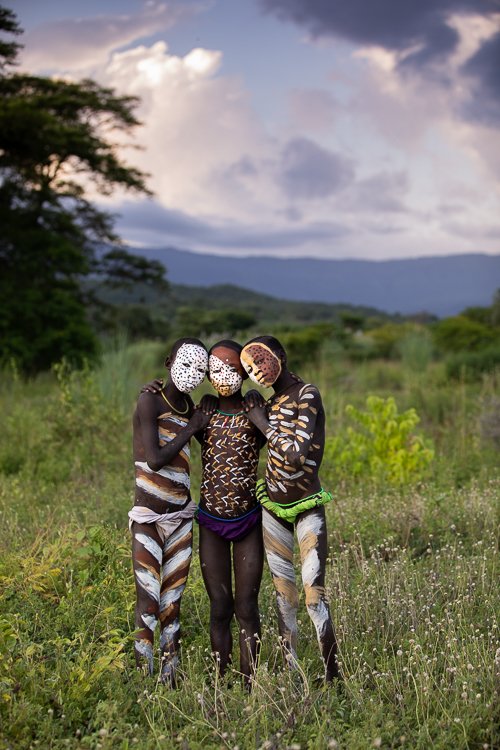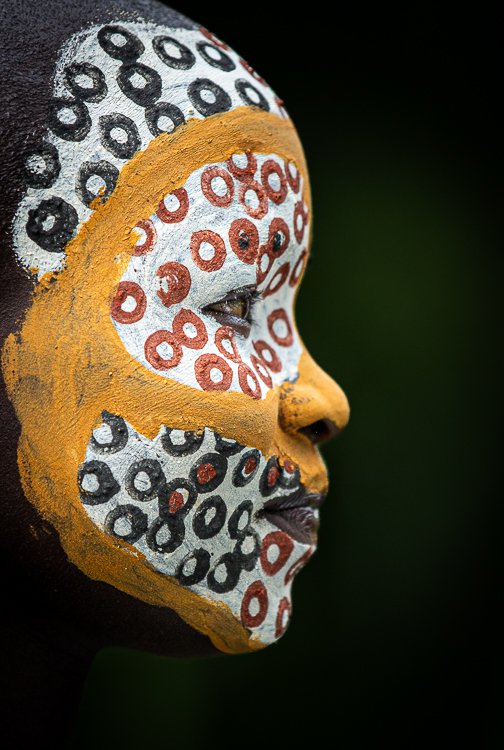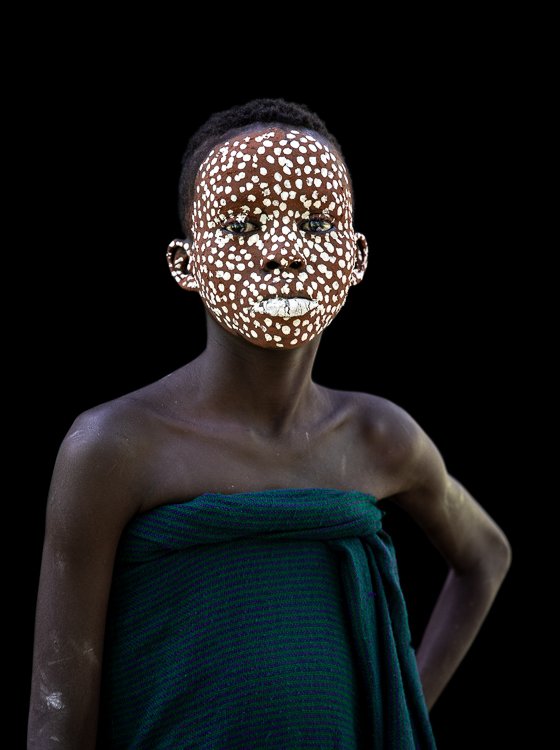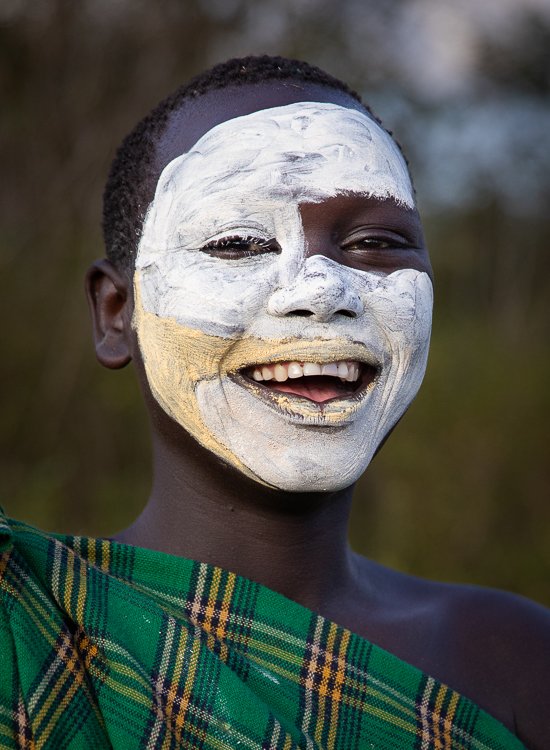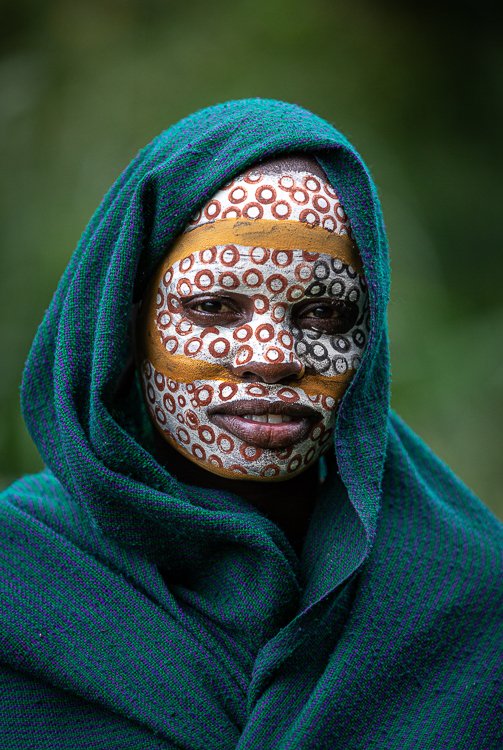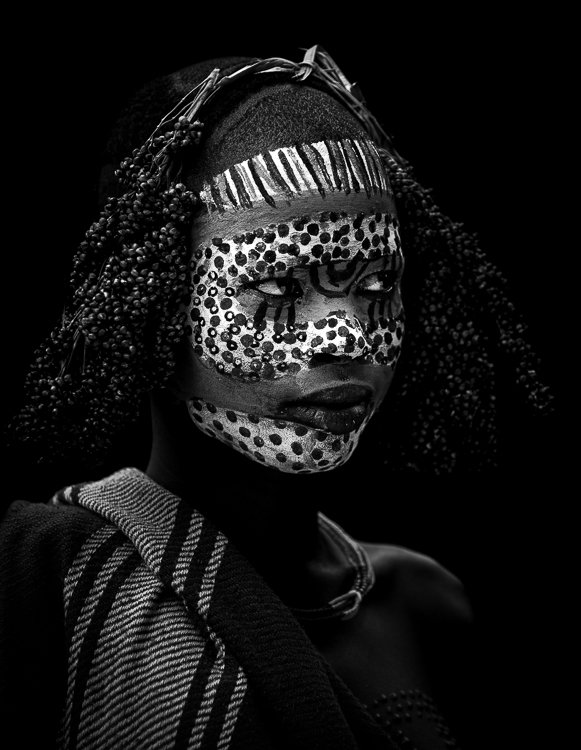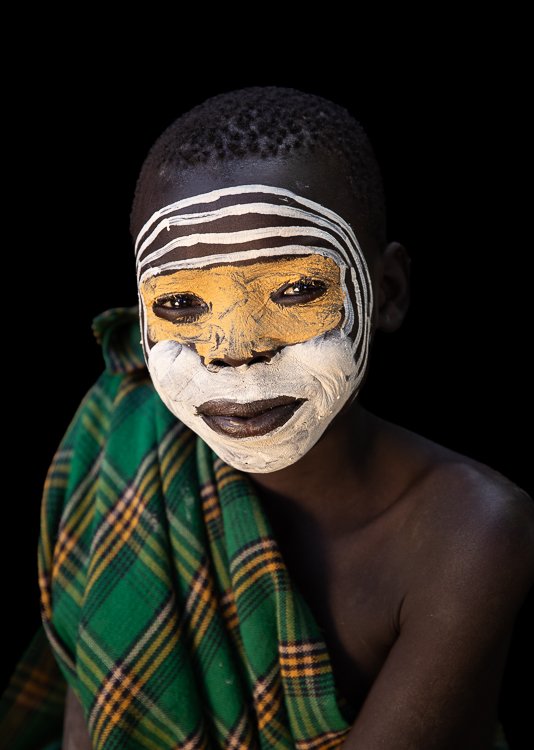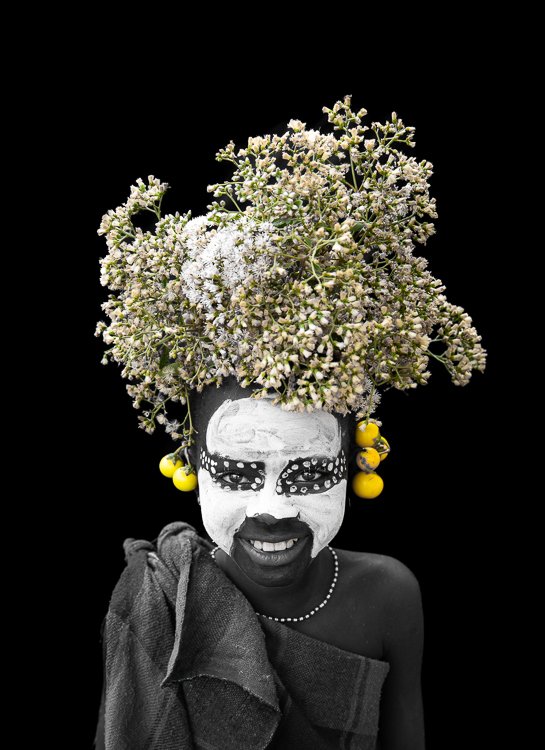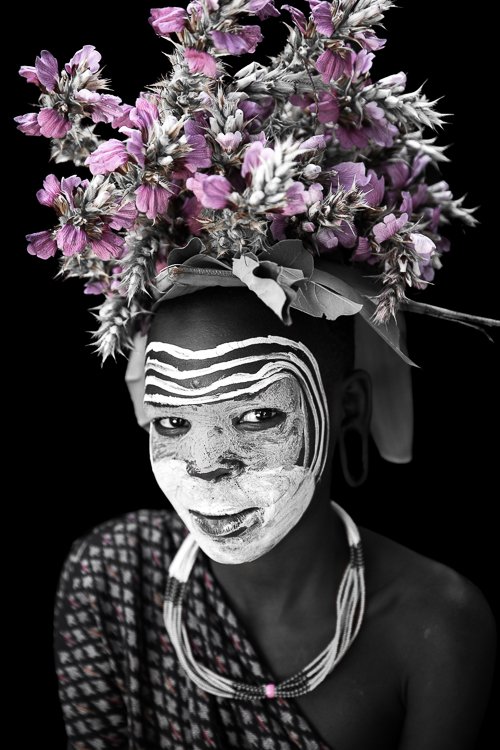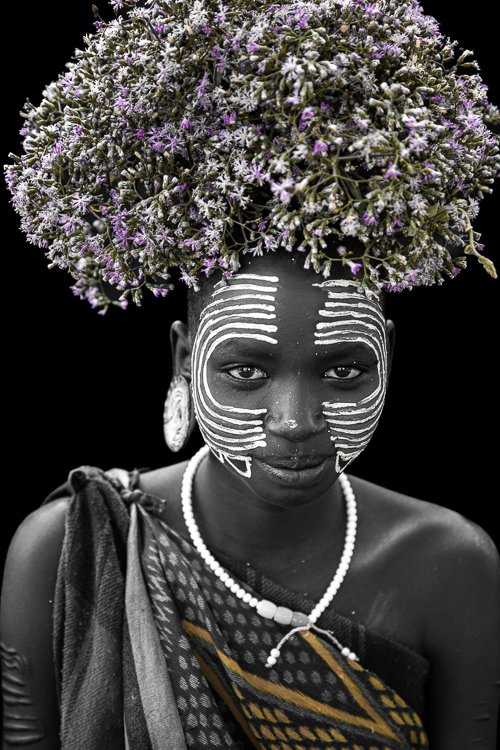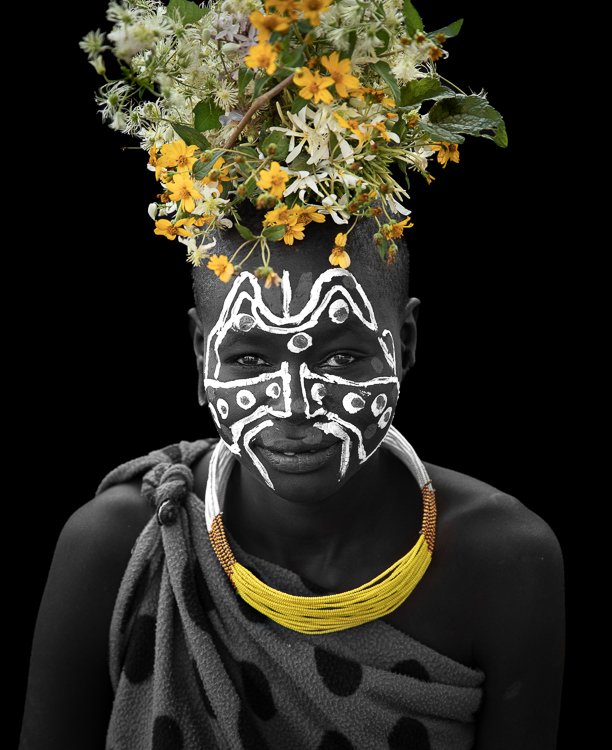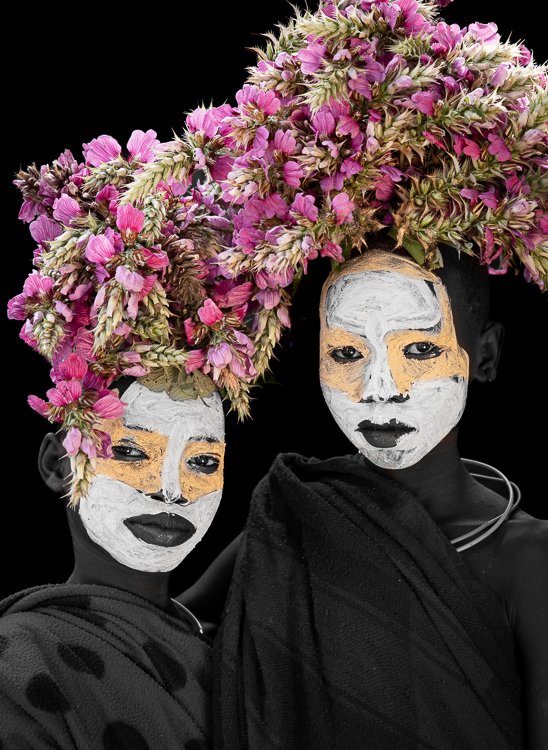Ethiopias suri tribe is one of the most beautiful african tribes to photograph!
Taking photos of the Suri Tribe in Ethiopias South West near Tulgit and Kibish is always an absolute dream. Every trip and every day is unique and they welcome you with open arms and LOVE being in front of a camera!
A photographers delight!
A gorgeous Suri Tribe girl with flowers on her head, ear disks and face paint.
75 PHOTOS FROM SURI TRIBE (SURMA TRIBE)
6 Suri Tribe Flower Portraits
10 SURI TRIBE BOYS AND GIRLS PORTRAITS
4 SURI TRIBE DONGA STICK FIGHTING CEREMONY PHOTOS
10 Suri Tribe Women Portraits
5 Suri Tribe Body Scarring Photos
4 Suri Tribe WOMEN WITH Ear Plugs PORTRAITS
8 Suri Tribe Men PHOTOS
8 Suri Tribe Landscape Portraits
6 Suri Tribe Body Painting Photos
7 Suri Tribe Face Painting Portraits
7 Suri Tribe Limited Color PORTRAIT SERIES
SURI TRIBE FLOWER PORTRAITS
Such a creative African tribe, the Suri women and children gather natural resources to decorate their bodies and use at headpieces. The floral head arrangements they really enjoy creating and being in front of a camera. Incredibly friendly people to spend time with and always an honour to photograph and capture such stunning portraits.
Suri Tribe Boys and Girls Portraits
The Suri Tribe boys and girls love when photographers come and visit them. They love it when tourists play with them and interact. Like all children they are inquisitive and love to learn and have fun.
SURI TRIBE DONGA CEREMONY PHOTOS
During the Donga (stick fighting) ceremonies the men gather in large groups to practise, fight and celebrate. The Donga is also known as the “Surma Stick Fighting Ceremony”. It is a coming of age ceremony where men fight to show their strength and power and get a wife. There is a judge taking control during the Donga fight and whilst it is quite violent you are not allowed to kill the opponent (although men have died in the past it is avoided as much as possible). It is truly remarkable and incredible to witness this adrenaline fuelled tradition.
SURI TRIBE WOMEN PORTRAITS
On my return visits to the Suri Tribe I feel so fortunate to see the women and families growing and growing up! Some of my favourite moments with the Suri Tribe are singing and dancing around the campfire when I’ve asked the chiefs multiple wives to join us. The Surma tribe women that have lip plates can remove them when they are eating or when they want to. Both the Suri Tribe and Mursi Tribe women traditionally have lip plates.
You can find out more about the lip plates of these African tribes on a past blog post CLICK HERE
The Surma tribe womens stretched lower lip hangs down when their lip plate is not inserted. Some have previously had lip disks or plugs, but like the lip plates they are not always worn. The Surma women sometimes have metal rings or hang various items on their lower hanging ears when they don’t have an ear disk inserted.
SURI TRIBE BODY SCARRING PHOTOS
Like many of the various ethnic groups in Southern Ethiopia and Northern Kenya, the Suri Tribe practise body scarring. The Suri Tribes body scarring on the women is mostly fashion and to express ones individuality and creativity. It also signifies strength and beauty.
The body scarring originated with patterns in a dash design and circular patterns when on the face. In more recent years some of the teenage girls and younger women have created scars on their arms of their names written in English. The majority of the women’s names in the Suri Tribe start with “NA” which is their tradition. So when you see body scaring words starting with NA it is their names.
The middle girl has an ear plate and body scarring on her upper arm.
The closest Suri Tribe girl has her name as body scars on her arm.
Body scarring fashion in African tribes are developing and changing depending on what the individual (and her friends doing it) want. For example in one Mursi Tribe village some of the girls have in more recent years got body scarring of detailed Amharic letters (the official language of Ethiopia).
Many African tribes use body scarring as a method of healing them when sick. This is especially true for children. The adults will cut their skin near the area of their body that is unwell as they have beliefs this will heal and help them get well. Body scarring can mean different things in different tribes. For example the body scarring in some African tribes if they’ve killed an enemy is not the same amongst all tribes in that area or country. The Hamer tribe warriors in Southern Ethiopia that have killed have many scars on their chest, however in a Rendille tribe village in Northern Kenya I met a warrior with the same body scarring but his was because he had stomach illness when he was a child. He was really interested when I told him the meaning of those scars in other tribal villages.
SURI TRIBE WOMEN WITH EAR PLUGS PORTRAITS
The younger generation of Suri Tribe girls are discontinuing with the lip plate tradition. However, body scarring and ear plugs/disks are still highly fashionable and practised. The ear disks are made out of clay and are simply smaller versions of the lip plate disks.
SURI TRIBE MEN PHOTOS
Many of the men are quite far from the Suri Tribe villages at their cattle camps. Looking after the cattle is an important role for a man and many of the teenage children don’t go to school or miss a year or two to live at the cattle camp and learn this responsibility and lifestyle. However, the chief of the village and other elders as well as a variety of men and teenage boys are still around the tribal villages.
More recent changes in local government boundaries has changed many things for the Suri Tribe. As a tourist the main difference that is noticeable is that there are less guns allowed. Certain men can still have a gun, but they are limited and not allowed in town (at the time of writing this!). Laws and rules often change, but this was a big change that is evident when visiting now in contrast to past years.
Other changes when visiting the Suri are price increases to visit and minimum or 2 armed guards needed when camping. One guard always should stay at camp and one stays with you when you are away from camp. This was the ruling when the government areas changed and obviously new management means new changes. However this is always a flexible and dynamic situation that will no doubt change in the months/years ahead.
SURI TRIBE LANDSCAPE PORTRAITS
Whilst I love taking close up portraits and headshots of the incredible Suri Tribe, I also love going for walks around the campsite and their villages. The landscape surrounding the Suri Tribe is simply stunning with high mountains, windy paths, roads and flowing rivers.
SURI TRIBE BODY PAINTING PHOTOS
The Suri Tribe use body painting as a natural form of creative expression as well as skin protection and traditional ritual for ceremonies. The body painting used to be more solid with less patterns and intricate detailing. The men before ceremonies like the Donna stick fighting often go to the river and cover their bodies in natural paint with swirls. This is usually done at least a few days before the Donga so it doesn’t look fresh at the time of the ceremony. Sometimes you can hardly notice that a few of the men have body paint as it is often fairly faint. The majority don’t, but some men choose to do it.
SURI FACE PAINTING PORTRAITS
Natural Paint
Rocks and clay are crushed with water mixed for the natural body paint in the Omo Valley.
SURI TRIBE BESPOKE COLOR SERIES
I’ve surprised myself by using this old editing technique (which I thought would never be seen again lol) and I absolutely love the results! Here is a preview of my unique Suri Tribe bespoke color series.
Spot Color
It’s an old technique and something I haven’t done for many years. However, I’ve done a series of Suri Tribe images with mostly black and white with a spot of colour.
I’m delighted with the results…a real WOW factor and something a little different!
Are Suri Tribe and Surma Tribe the same?
The Suri Tribe are part of the Surma Tribe collective group which includes the Mursi Tribe. However, whilst many tourists visit the Mursi Tribe, the Suri Tribe live in a more remote area which is not as easily accessible. The Mursi Tribe live in Mago National Park which is only a short drive from Jinka airport. The experience of visiting, spending time with and photographing the Mursi and Suri are very different indeed.
When you look at a map the Suri and Mursi look like they live quite close, however due to the mountainous terrain you need to allow enough days to visit the Suri Tribe as they are more challenging to visit due to the limit roads and road conditions.
To find out more about where the Ethiopian Tribes live read my previous blog post with Southern Ethiopia maps I’ve created CLICK HERE



